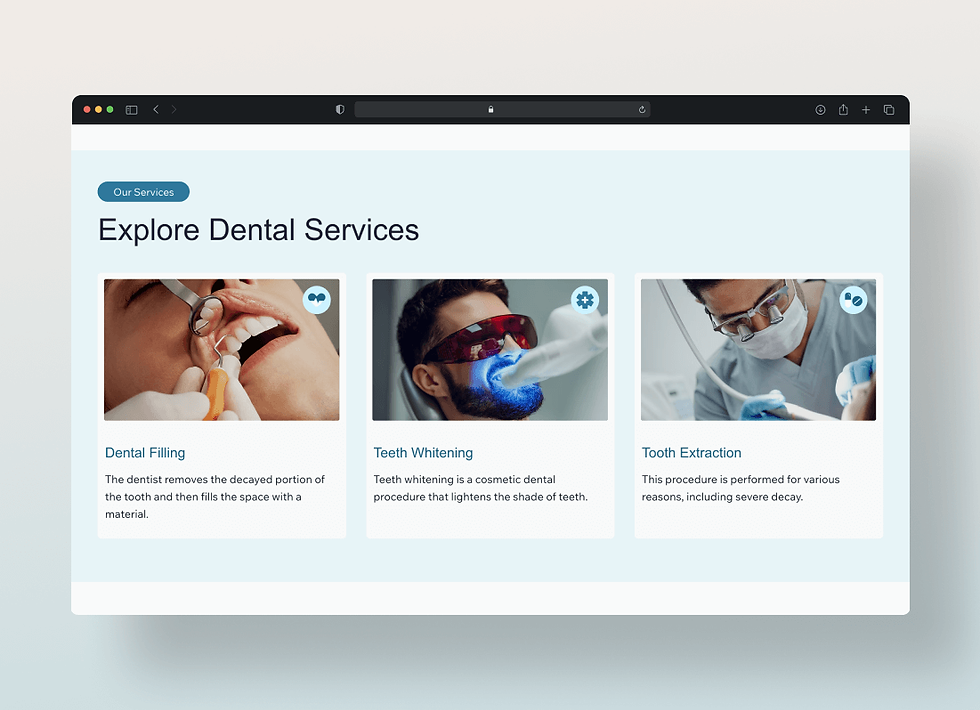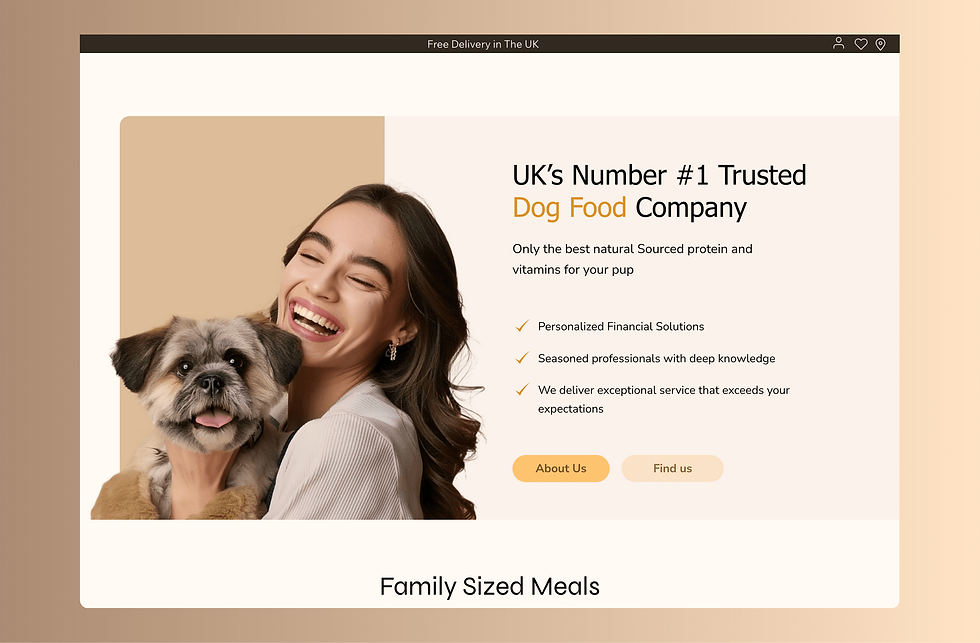Don't Get Fined! Make Your Website Accessible with These Easy Fixes
- Emilia Rose

- Jun 26, 2024
- 5 min read
Updated: Sep 19, 2024

Web Accessibility: Don't Leave Anyone Behind!
Building a killer website? Awesome! But before you launch, let's make sure everyone can experience your awesomeness!
That's where accessibility comes in. It means designing websites that EVERYONE can use, no matter their abilities. Think of it as the superpower of inclusivity!
Accessibility means making your website usable for everyone, including people with disabilities. This includes people who are blind, deaf or have difficulty moving. It’s like adding ramps to a building so everyone can get in.
Why is accessibility important?
Wider Audience: Reach a larger pool of potential customers and make a positive impact.
It's the Right Thing to Do: Everyone deserves a smooth website experience.
Accessibility doesn't have to be scary! Here are some easy wins:
Colour Contrast Champs: High-contrast colour combos are your friend! Think of bold text on bright backgrounds. Free online checkers can help you choose the perfect pairings.
Label Like a Boss: Use clear and concise labels for buttons and links. Ditch the jargon, keep it simple!
Keyboard Kings & Queens: Make sure your website can be navigated with just a keyboard, no mouse is needed. This is essential for users with motor limitations.
Decoding WCAG: Your Secret Weapon for Website Accessibility! ️
Ever heard of WCAG, but not sure what it means? Don't worry, web warriors, we've got you covered! WCAG stands for Web Content Accessibility Guidelines. Think of it as your roadmap to creating websites that everyone can use and enjoy, regardless of ability.
WCAG uses a three-level system: A, AA, and AAA. Each level represents a different level of accessibility:
Level A: This is the basic level, ensuring some accessibility features are in place.
Level AA: This is the accessibility sweet spot. It offers a good balance between functionality and design, making it the most common goal for websites.
Level AAA: This level goes above and beyond, providing the highest level of accessibility.

Alt Text: The Secret Superhero of Your Images!
Ever wondered what happens when someone who can't see visits your website and encounters an image? That's where alt text swoops in, cape and all!
Alt text is a short description of an image. It's like whispering a secret message to screen readers, telling them what the image is all about. This way, everyone, regardless of ability, can understand the full picture (pun intended!) of your website.
Here's how to craft compelling alt text:
Be a Description Detective: Uncover the details of your image. What's happening? Who's there? Describe it clearly and concisely.
Keep it Captivating, Not Confusing: Aim for short, informative sentences. Avoid unnecessary details or internal jokes that only you might understand.
Think SEO Sidekick: Alt text can be a secret weapon for search engines too! Include relevant keywords that describe the image content, but don't stuff keywords unnaturally.
Why is alt text so important?
Accessibility Advocate: It empowers blind and visually impaired users to understand your website's content.
SEO Superhero: Search engines can't see images, but they can read alt text. This helps your website rank higher for relevant searches.
User Experience Champion: Clear alt text enhances the overall experience for everyone.
Mastering Colour Contrast: Tips for Easy-on-the-Eyes Websites
Colour contrast is the magic ingredient that makes your website text readable for everyone. No more squinting or deciphering text that blends into the background! Here are some tips to help you master colour contrast and create an accessible website:
1. Embrace the Power of Contrast Checkers:
These online lifesavers take the guesswork out of choosing colours. Popular options include the WebAIM Colour Contrast Checker and the Adobe Colour Contrast Checker. Simply input your chosen foreground and background colours, and these tools will tell you if the contrast is sufficient for good readability according to WCAG (Web Content Accessibility Guidelines) standards.

2. Think Bold & Bright
High-contrast colour combinations are your best friends. Text should be noticeably different from the background colour. Imagine bold black text on a crisp white background or vivid blue text against a bright yellow backdrop. These pairings ensure clear readability for everyone.
3. The Lighter, the Brighter Rule
For a classic and safe approach, use a lighter shade for the background and a darker shade for the text. This creates a natural contrast that's easy on the eyes. Think white background with black text, or light grey background with dark grey text.

4. Consider the Colour Wheel
Suppose bold isn't your style, fear not! Explore colours that are opposite each other on the colour wheel. For example, blue text pops on an orange background, or green text stands out against red. This creates a visually pleasing contrast while maintaining readability.
5. Don't Forget About Low Vision
Remember, some users might have limited colour perception. While bright colours can be effective, ensure there's enough value contrast as well. This means using colours with a significant difference in lightness or darkness, even if they share similar hues.
Bonus Tip: Test your website with a grayscale filter. This helps you see if the contrast relies solely on colour differences and not value differences. If the text becomes hard to read in grayscale, it might need adjustments for better accessibility.
By following these tips and utilizing colour contrast checkers, you can create a website that's not only beautiful but also accessible to everyone. Remember, good contrast is like a warm welcome mat – it invites everyone in and lets them experience your website with ease!
Keyboard Crusaders: Conquering Your Website Without a Mouse! ️
Not everyone uses a mouse, but everyone deserves a smooth website experience! That's where keyboard navigation comes in, our champion for accessibility.
Keyboard navigation means being able to move around your website using just the keyboard. This is essential for users with motor limitations or who prefer using a keyboard.
Here's how to make your website keyboard-friendly:
Tab-tastic Navigation: Make sure all interactive elements, like links and buttons, can be accessed by pressing the Tab key. Imagine the Tab key as your virtual tour guide, leading you through the website.
Headline Heroes: Use clear headings (H1, H2, etc.) to structure your content. This helps screen readers understand the layout and navigate the page efficiently.
Descriptive Link Defenders: Don't be a mystery! Use clear and descriptive link text instead of vague phrases like "Click Here." Tell users exactly where the link leads, like "Read Our Blog."
Formidable Form Labels: Clearly label all form fields. This ensures everyone, regardless of ability, understands what information is needed in each field.
Crystal Clear Focus Indicators: When a user tabs to an element, make it clear which element is currently in focus. This helps users stay oriented and navigate with confidence.
Final Thoughts
Making your website accessible helps everyone. It improves your SEO, brings in more visitors, and shows you care. Start with colour contrast, alt text, and keyboard navigation. Follow WCAG 2.1 guidelines, and you’ll be on the right track.
Want to create a website that's stunning AND inclusive? I specialize in user-friendly web design that looks amazing and works for everyone. Let's chat and build something awesome together!
























_edited.jpg)